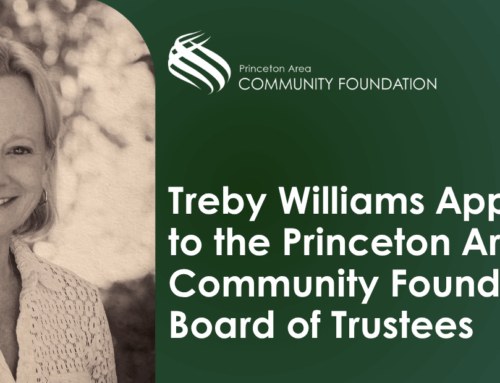A recent article on October 26 in The Washington Post raised red flags about nonprofits with an exposé of a “hidden world of thefts, scams and phantom purchases at the nation’s nonprofits.”

Nancy Kieling, President, Princeton Area Community Foundation
Such reporting, while including some important cautions, does a disservice to the countless organizations that do incredible work in their communities across the nation every day.
Our sector is held to a high standard and that is good. We run on the generosity of others, and many rely on us. We work hard to be transparent.
And, like any sector of society, there are those who perform less than professionally. The issues highlighted by The Post are complicated, and casting the entire nonprofit sector as bad actors, or clueless to good business practices is simply not accurate.
The Post identified more than 1,000 nonprofit organizations, reporting a “significant diversion” of assets since 2008, the year the question about such losses first appeared on IRS Form 990 disclosure reports. While some diversions involve legal exchanges, The Post states, most are attributed to theft or embezzlement, sometimes leading to the loss of tens of millions of dollars to a single organization. However, Rick Cohen, in the Nonprofit Quarterly, points out two important details:
- Most nonprofits that found internal fraud took quick and decisive action including termination of the employee, legal action, and restitution (for-profits often fire the person and move on)
- Much of the fraud reported was by investment firms that also scammed for-profit investors and flummoxed the SEC as well and are well-known as scam artists.
The Post’s “exposé” is the latest in a string of pieces this year that purport to shine new light on our sector. But, as The Chronicle of Philanthropy correctly points out, most of the fifty organizations featured in the Post’s coverage “are extreme outliers, apparently set up primarily to funnel money to professional fundraisers while using names meant to evoke more established legitimate charitable organizations.”
This kind of fraud, abuse and mismanagement, of course, is not unique to the nonprofit sector. Any American who has endured our nation’s economy for the past six years, or followed the Enron collapse, can see that. Moreover, the Chronicle reports that many of the 1,000 nonprofits that reported “significant diversion” of assets since 2008 did so as victims of “scams by for-profit vendors, employee theft, and outside investment advisers” including Bernie Madoff.
In New Jersey, we’ve seen our press corps dwindle to the point that there is little philanthropic news coverage. That vacuum makes stories like The Post’s even more damaging.
The story is out there, and our sector needs to bring a truthful balance to the controversy.
We have to actively partner with the media and the communities we serve to show that our sector is transparent, that we work hard to weed out fraud, and that we are prepared to educate people in the functions of the nonprofit sector. Anything less greatly reduces our collective ability to build and support our communities.
Nancy Kieling
President, Princeton Area Community Foundation





